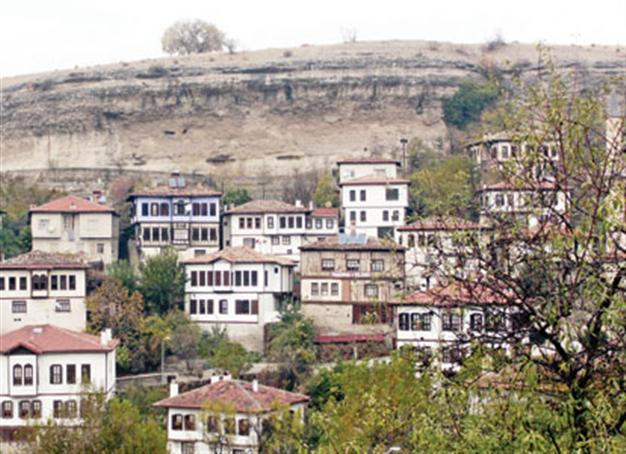
The restorations of the Kavaklar and Asiye Hatun mosques are being conducted with care. The largest of the 32 mosques in the district was restored previously. AA Photo
The old Ottoman town of Safranbolu, which has been on UNESCO’s World Heritage List since 1994 due to its well-preserved houses and architecture, has begun work to restore two of its most prominent mosques.
Eleven of 32 old mosques have already been restored, but the local municipality is now restoring two more mosques in the area.
The restoration work on the Kavaklar and Asiye Hatun mosques, which began a month ago, is expected to be finished by the end of the year. When the restoration is complete, the two historical places of worship are again expected to become centers of attraction.
Restoration project
Speaking to Anatolia news agency, Institute for Cultural Preservation manager Mustafa Sucu said the mosques in the region belonged to associations and that the restoration projects were being conducted by those associations.
The restorations of the Kavaklar and Asiye Hatun mosques are being conducted with care, Sucu said, adding that the largest of the 32 mosques in the district was restored previously.
It is very important to do the restoration very carefully so that its design remains as close as possible to the original, according to Sucu.
“We are overseeing the current restoration process,” said Sucu, adding that the Asiye Hatun Mosque was built in 1939 while the Kavaklar Mosque was constructed in 1945.
The team that is undertaking the restoration is trying to restore the mosques in line with their originals.
The old town of Safranbolu, which is a district of Karabük, features many old buildings, as well as 1,008 registered historical artifacts, including one private museum, 32 mosques, five tombs, eight historical fountains, five Turkish baths, three caravanserais, one historical clock tower, one sundial and hundreds of houses and mansions.
Ancient settlement
There are also mounds from ancient settlements, rock tombs and historical bridges. The old town is situated in a deep ravine in a fairly dry area in the rain shadow of the mountains. The new town can be found on the plateau about two kilometers west of the old town.
The name of the town derives from “saffron” and the Greek word “polis,” meaning city, because Safranbolu was a trading place and a center for growing saffron. The trade in saffron has continued to the present day; some say the village of Davutbaşı, 22 kilometers east of Safranbolu, produces some of the world’s best saffron
The old Ottoman town of Safranbolu, which has been on UNESCO’s World Heritage List since 1994 due to its well-preserved houses and architecture, has begun work to restore two of its most prominent mosques.
Eleven of 32 old mosques have already been restored, but the local municipality is now restoring two more mosques in the area.
The restoration work on the Kavaklar and Asiye Hatun mosques, which began a month ago, is expected to be finished by the end of the year. When the restoration is complete, the two historical places of worship are again expected to become centers of attraction.
Restoration project
Speaking to Anatolia news agency, Institute for Cultural Preservation manager Mustafa Sucu said the mosques in the region belonged to associations and that the restoration projects were being conducted by those associations.
The restorations of the Kavaklar and Asiye Hatun mosques are being conducted with care, Sucu said, adding that the largest of the 32 mosques in the district was restored previously.
It is very important to do the restoration very carefully so that its design remains as close as possible to the original, according to Sucu.
“We are overseeing the current restoration process,” said Sucu, adding that the Asiye Hatun Mosque was built in 1939 while the Kavaklar Mosque was constructed in 1945.
The team that is undertaking the restoration is trying to restore the mosques in line with their originals.
The old town of Safranbolu, which is a district of Karabük, features many old buildings, as well as 1,008 registered historical artifacts, including one private museum, 32 mosques, five tombs, eight historical fountains, five Turkish baths, three caravanserais, one historical clock tower, one sundial and hundreds of houses and mansions.
Ancient settlement
There are also mounds from ancient settlements, rock tombs and historical bridges. The old town is situated in a deep ravine in a fairly dry area in the rain shadow of the mountains. The new town can be found on the plateau about two kilometers west of the old town.
The name of the town derives from “saffron” and the Greek word “polis,” meaning city, because Safranbolu was a trading place and a center for growing saffron. The trade in saffron has continued to the present day; some say the village of Davutbaşı, 22 kilometers east of Safranbolu, produces some of the world’s best saffron